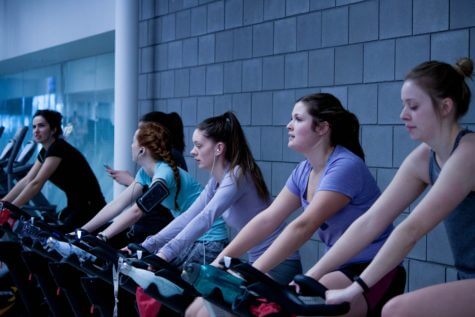HAMILTON, Ontario — High-intensity interval training (HIIT) has been touted by fitness experts in recent years for its ability to help make hearts healthier, lead to faster weight loss, and even slow down aging. Now scientists have found even more benefits, especially when a regimen works in tandem with brain training. A new study finds the sweat-inducing style of exercise helps grow important brain-strengthening proteins that may lead to a stronger memory.
HIIT involves short bouts of very vigorous exercise with periods of rest in between. For example, a gym-goer may sprint on a treadmill for one minute, then slow down to a brisk walking pace for two minutes, sprint for another minute, walk again, and then continue the pattern for a 20 to 30 minute span. The practice been shown to be a worthy alternative to typical exercise routines like jogging or traditional weight training, which favors less-rigorous activities over longer periods of workout time.

For this latest study, researchers at McMaster University in Canada tested 95 healthy young adults, separating them into groups performing either high-intensity interval training for 20 minutes three times a week on an exercise bike; combined exercise and cognitive training — which involved the same HIIT routine, but participants took part in a 20-minute memory strengthening test before or after exercising; or no training, physically nor cognitively, at all.
They were tested on memory tasks before and after the six-week experiment. Researchers specifically targeted what’s known as “high-interference memory,” which helps people distinguish between objects, such as figuring out which car is yours when lined up next to ones of a similar make and model.
Both the HIIT group and the combined training groups performed better after their exercise regimens than the control group. But they also found that participants who enjoyed greater exercise gains also showed higher levels of a protein known as brain-derived neurotrophic factor (BDNF). BDNF helps brain cells grow, work and live longer. Researchers believe the greater levels of BDNF are the reason for participants performing better on memory tests, and the gains were especially notable in the group that partook in both the exercise and memory routine.
“Improvements in this type of memory from exercise might help to explain the previously established link between aerobic exercise and better academic performance,” said Jennifer Heisz, lead author of the study and an assistant professor of Kinesiology at McMaster, in a release. “At the other end of our lifespan, as we reach our senior years, we might expect to see even greater benefits in individuals with memory impairment brought on by conditions such as dementia.”
Researchers are now looking at how combining HIIT with memory training could be beneficial for older adults at risk of cognitive decline. Could exercising the body and brain together be the best defense against memory-killing diseases like Alzheimer’s or dementia?
“One hypothesis is that we will see greater benefits for older adults given that this type of memory declines with age,” says Heisz.
The full study was published in the November 2017 edition of the Journal of Cognitive Neuroscience.
